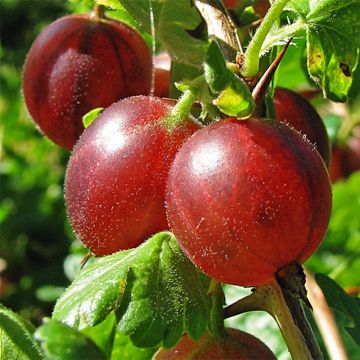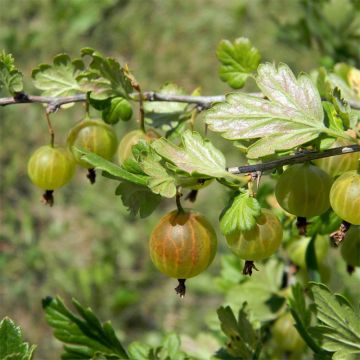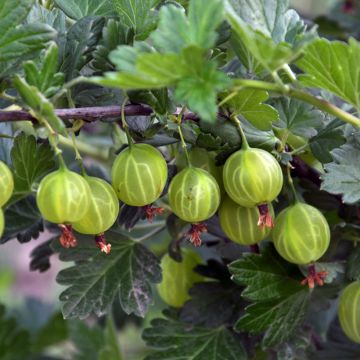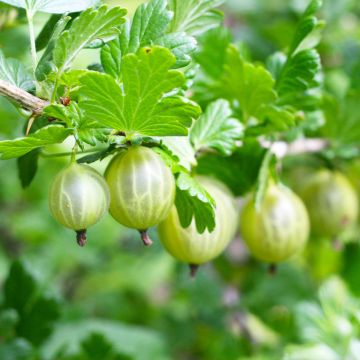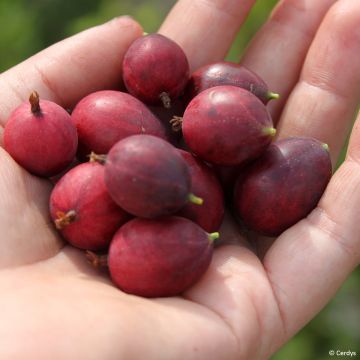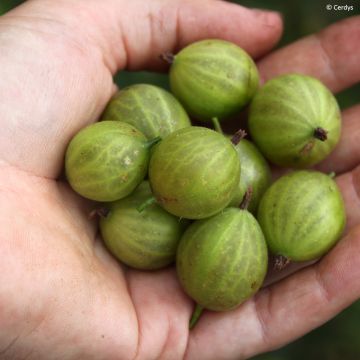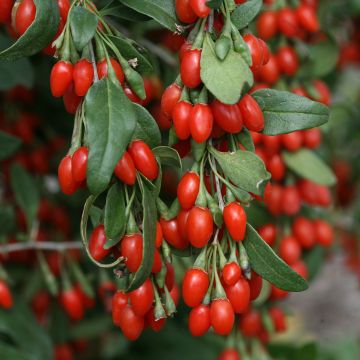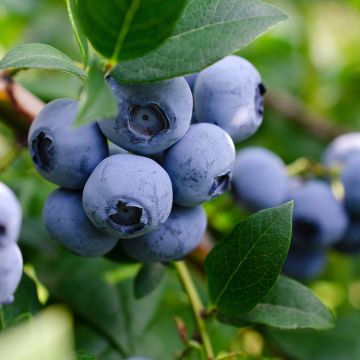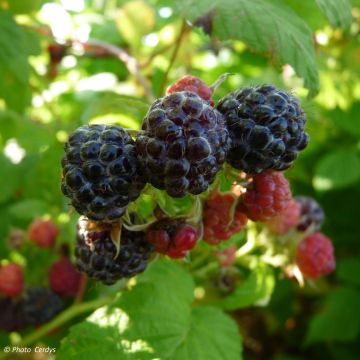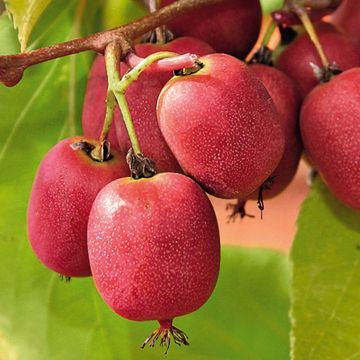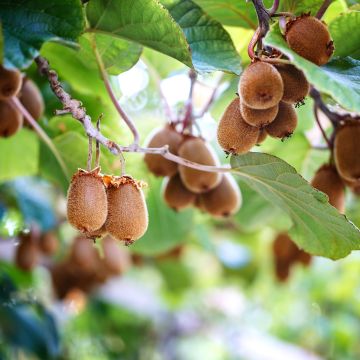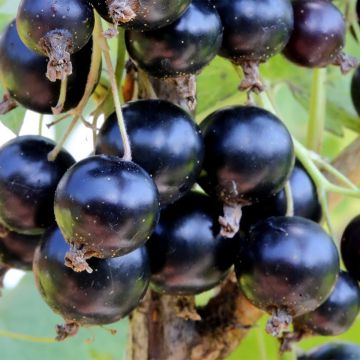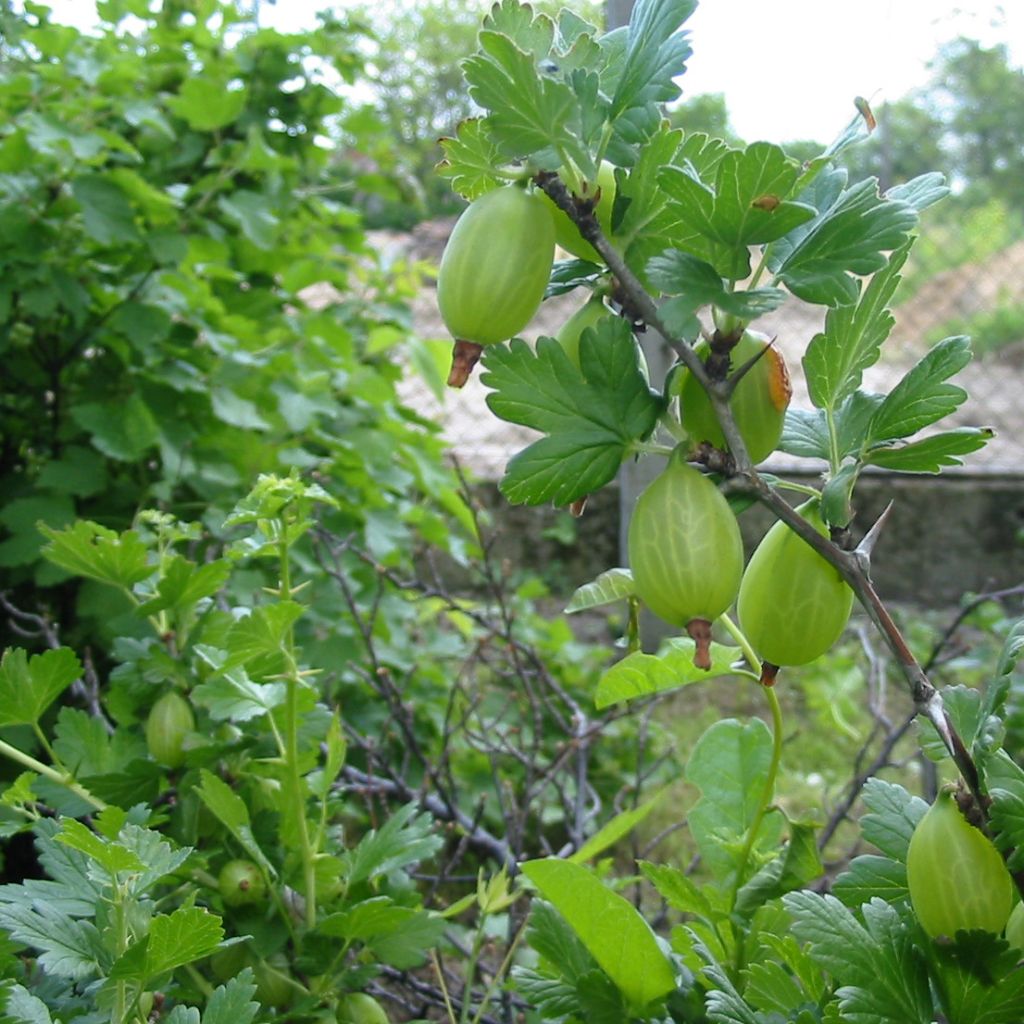

Gooseberry Worcesterberry - Ribes uva-crispa
Gooseberry Worcesterberry - Ribes uva-crispa
Ribes uva-crispa Worcesterberry
Gooseberry
Reçu bien emballée.Arbuste trés fourni avec beaucoup de branches,pas encore de feuilles. J'attends le mois prochain pour voir le développement.
Denis M., 08/04/2018
Special offer!
Receive a €20 voucher for any order over €90 (excluding delivery costs, credit notes, and plastic-free options)!
1- Add your favorite plants to your cart.
2- Once you have reached €90, confirm your order (you can even choose the delivery date!).
3- As soon as your order is shipped, you will receive an email containing your voucher code, valid for 3 months (90 days).
Your voucher is unique and can only be used once, for any order with a minimum value of €20, excluding delivery costs.
Can be combined with other current offers, non-divisible and non-refundable.
Home or relay delivery (depending on size and destination)
Schedule delivery date,
and select date in basket
This plant carries a 6 months recovery warranty
More information
We guarantee the quality of our plants for a full growing cycle, and will replace at our expense any plant that fails to recover under normal climatic and planting conditions.
Description
The Worcesterberry Bush is a productive, vigorous variety that is particularly resistant to powdery mildew and self-fertile. The fruits, round in shape with slightly hairy red skin and translucent pink flesh, have a pleasant fragrance and are both sweet and tangy. Rich in pectin, they are perfect for making jellies or jams. Slightly crunchy, fresh berries are delicious and their subtle aroma works wonders in pastries and as an accompaniment to fish or savoury dishes. They are harvested from mid-July.
The Worcesterberry gooseberry bush (Ribes grossularia var. uva-crispa) belongs to the Grossulariaceae family, just like Redcurrant Bushes (Ribes rubrum) and Blackcurrant Bushes (Ribes nigrum). Cultivated in northern Europe since the 16th century, the Gooseberry Bush is a fertile hybrid resulting from the cross-breeding of two species native to Europe and North Africa, still found in montane forests in Scotland, France, and the Caucasus.
The Gooseberry is a bushy, thorny shrub with a clump-like habit of slightly stiff, branching, and spreading stems. This very hardy bush reaches a height of 1 m (3ft) with a spread of 75 cm (30in). The foliage is deciduous (absent in winter), composed of palmate, lobed, and aromatic leaves of medium green. This shrub resembles classic currant bushes, but differs mainly in terms of the fruits: larger, with a sweet flavour, they appear solitary along the branches unlike other currants. Except for a few thornless varieties, the Gooseberry Bush has prickly stems. The flowering occurs in spring, in the form of clusters of insignificant greenish flowers, intensely visited by bees. The fruiting primarily occurs on one- to two-year-old branches. The bush then becomes covered with translucent berries, round to oval in shape, with a diameter of 1.2 cm (1in), distributed along the branches, resembling marbles and containing small seeds. Harvesting, spread out as the fruits ripen, is simplified due to the size of the grains.
The Worcesterberry Bush produces 3 to 5 kg of fruit per plant depending on the age and growing conditions of the plant. The fruits are rich in vitamin C, antioxidants, minerals, trace elements, potassium, calcium, and phosphorus. Moreover, their low sugar content classifies them among the least energy-rich berries (50 kcal per 100 g).
Like colourful marbles, Gooseberry fruits are a true delicacy in the summer. Picked from the bush, they are exquisite when eaten fresh, and for added indulgence, they can be sprinkled with a little granulated sugar. In cooking, to reduce the acidity of the fruits, they can be blanched for a minute and then cooled under cold water. Excellent in jellies or jams, they can also be used to garnish pies and make cakes. They are perfect for making syrups, sorbets, ice creams, or desserts. The subtle balance between the fruit's aromas and acidity offers an interesting use for accompanying meats (game, poultry, etc.), fatty fish (sardines, mackerel, tuna, etc.), or as a touch in mixed salads.
In summer, the Gooseberry Bush provides the satisfaction of bountiful harvests and the pleasure of enjoying tasty fruits, but be careful of the thorns. In the garden, it finds its place in association with other currant bushes, raspberry bushes, or other varieties of berries to form an edible hedge.
Report an error about the product description
Gooseberry Worcesterberry - Ribes uva-crispa in pictures
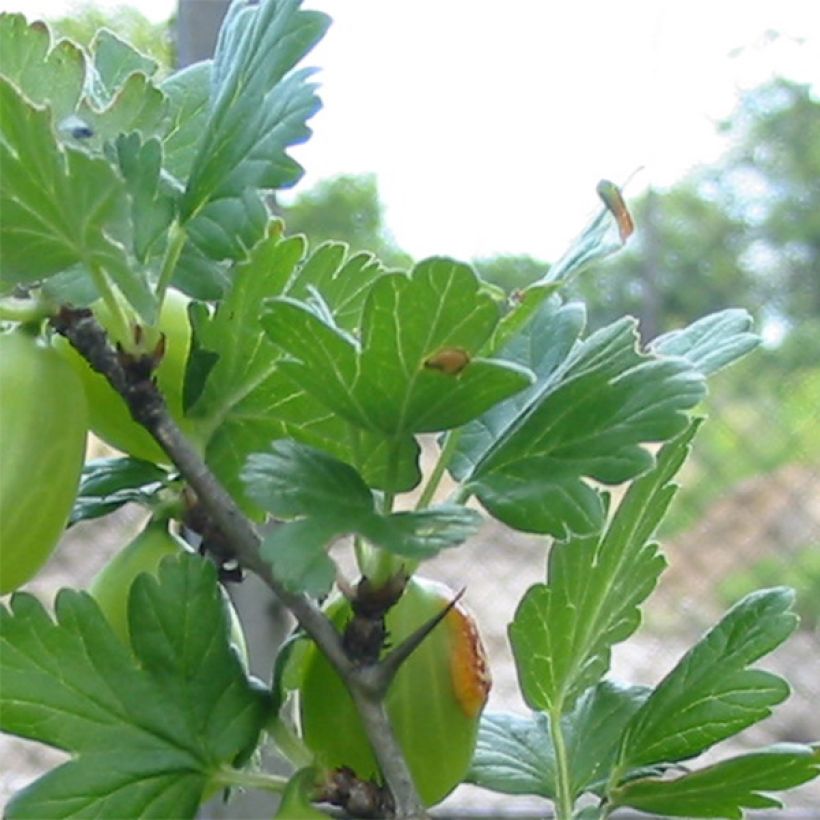

Plant habit
Fruit
Flowering
Foliage
Botanical data
Ribes
uva-crispa
Worcesterberry
Grossulariaceae
Gooseberry
Cultivar or hybrid
Other Gooseberry bush
View all →Planting and care
Plant the Worcesterberry Gooseberry Bush in ordinary, fresh, loose but substantial (clayey) and rich soil, neither too chalky nor too rich. Carry out the planting from October to March, after enriching the planting soil with well-rotted compost or dehydrated manure, and a handful of potash-rich fertiliser (strawberry type). Bury the root ball deeply, water generously to compact the soil and remove air around the roots. When planting as a hedge, space them every two metres. This bush prefers non-scorching direct sun in cooler climates, but partial shade in hotter ones. It dislikes high temperatures and drought, showing a clear preference for cool climates and mountainous regions. Treat against anthracnose (a fungal disease) before flowering, which causes brown spots on the leaves and premature leaf fall. During growth, treat against powdery mildew at the first symptoms (greyish felting on the leaves), as this fungus is a formidable enemy of Gooseberry Bushes. It is also susceptible to grey mould, another similar fungal disease (leaves and fruits covered in a whitish down turning brown), which simply destroys the harvest. Remove and burn the diseased parts, and treat with sulphur from the start of vegetation the following year.
Planting period
Intended location
Care
-
, onOrder confirmed
Reply from on Promesse de fleurs
Similar products
Haven't found what you were looking for?
Hardiness is the lowest winter temperature a plant can endure without suffering serious damage or even dying. However, hardiness is affected by location (a sheltered area, such as a patio), protection (winter cover) and soil type (hardiness is improved by well-drained soil).

Photo Sharing Terms & Conditions
In order to encourage gardeners to interact and share their experiences, Promesse de fleurs offers various media enabling content to be uploaded onto its Site - in particular via the ‘Photo sharing’ module.
The User agrees to refrain from:
- Posting any content that is illegal, prejudicial, insulting, racist, inciteful to hatred, revisionist, contrary to public decency, that infringes on privacy or on the privacy rights of third parties, in particular the publicity rights of persons and goods, intellectual property rights, or the right to privacy.
- Submitting content on behalf of a third party;
- Impersonate the identity of a third party and/or publish any personal information about a third party;
In general, the User undertakes to refrain from any unethical behaviour.
All Content (in particular text, comments, files, images, photos, videos, creative works, etc.), which may be subject to property or intellectual property rights, image or other private rights, shall remain the property of the User, subject to the limited rights granted by the terms of the licence granted by Promesse de fleurs as stated below. Users are at liberty to publish or not to publish such Content on the Site, notably via the ‘Photo Sharing’ facility, and accept that this Content shall be made public and freely accessible, notably on the Internet.
Users further acknowledge, undertake to have ,and guarantee that they hold all necessary rights and permissions to publish such material on the Site, in particular with regard to the legislation in force pertaining to any privacy, property, intellectual property, image, or contractual rights, or rights of any other nature. By publishing such Content on the Site, Users acknowledge accepting full liability as publishers of the Content within the meaning of the law, and grant Promesse de fleurs, free of charge, an inclusive, worldwide licence for the said Content for the entire duration of its publication, including all reproduction, representation, up/downloading, displaying, performing, transmission, and storage rights.
Users also grant permission for their name to be linked to the Content and accept that this link may not always be made available.
By engaging in posting material, Users consent to their Content becoming automatically accessible on the Internet, in particular on other sites and/or blogs and/or web pages of the Promesse de fleurs site, including in particular social pages and the Promesse de fleurs catalogue.
Users may secure the removal of entrusted content free of charge by issuing a simple request via our contact form.
The flowering period indicated on our website applies to countries and regions located in USDA zone 8 (France, the United Kingdom, Ireland, the Netherlands, etc.)
It will vary according to where you live:
- In zones 9 to 10 (Italy, Spain, Greece, etc.), flowering will occur about 2 to 4 weeks earlier.
- In zones 6 to 7 (Germany, Poland, Slovenia, and lower mountainous regions), flowering will be delayed by 2 to 3 weeks.
- In zone 5 (Central Europe, Scandinavia), blooming will be delayed by 3 to 5 weeks.
In temperate climates, pruning of spring-flowering shrubs (forsythia, spireas, etc.) should be done just after flowering.
Pruning of summer-flowering shrubs (Indian Lilac, Perovskia, etc.) can be done in winter or spring.
In cold regions as well as with frost-sensitive plants, avoid pruning too early when severe frosts may still occur.
The planting period indicated on our website applies to countries and regions located in USDA zone 8 (France, United Kingdom, Ireland, Netherlands).
It will vary according to where you live:
- In Mediterranean zones (Marseille, Madrid, Milan, etc.), autumn and winter are the best planting periods.
- In continental zones (Strasbourg, Munich, Vienna, etc.), delay planting by 2 to 3 weeks in spring and bring it forward by 2 to 4 weeks in autumn.
- In mountainous regions (the Alps, Pyrenees, Carpathians, etc.), it is best to plant in late spring (May-June) or late summer (August-September).
The harvesting period indicated on our website applies to countries and regions in USDA zone 8 (France, England, Ireland, the Netherlands).
In colder areas (Scandinavia, Poland, Austria...) fruit and vegetable harvests are likely to be delayed by 3-4 weeks.
In warmer areas (Italy, Spain, Greece, etc.), harvesting will probably take place earlier, depending on weather conditions.
The sowing periods indicated on our website apply to countries and regions within USDA Zone 8 (France, UK, Ireland, Netherlands).
In colder areas (Scandinavia, Poland, Austria...), delay any outdoor sowing by 3-4 weeks, or sow under glass.
In warmer climes (Italy, Spain, Greece, etc.), bring outdoor sowing forward by a few weeks.






























